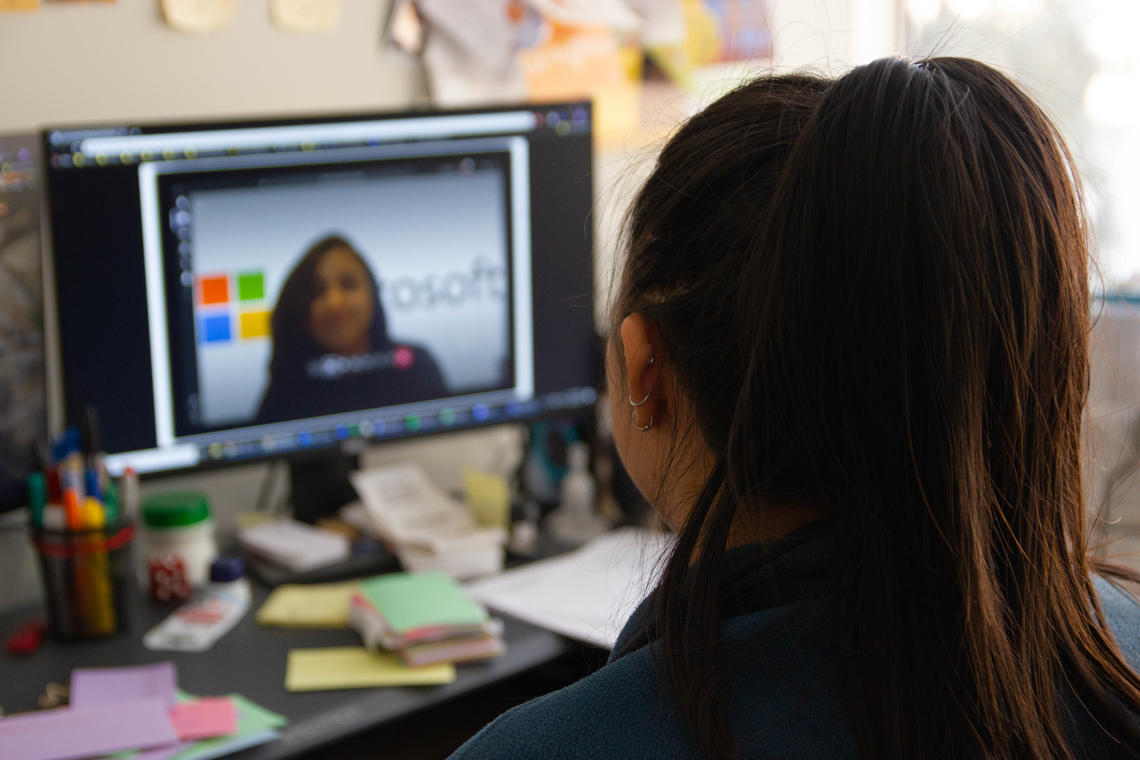
Student conduct in the virtual classroom
Following rules of conduct in the online classroom helps create a safe and respectful learning environment for everyone. Please familiarize yourself with university policy and the following guidelines. We all have a role to play in maintaining a caring campus community.
If you are an instructor and wish to report a conduct incident within an online learning setting, please complete the form below.
1. Student Conduct Expectations in Online Classrooms
There is an expectation that all students conduct themselves in a professional and respectful manner while in online learning environments.
This webpage will serve as a resource for students and staff seeking answers to the following questions:
- Who determines the “rules of engagement” in the virtual classroom?
- What is and is not considered appropriate class conduct?
- If a student is being disruptive in class, at what point does it become a policy violation?
- How can students become active bystanders in their virtual classrooms?
2. General guidelines for student conduct in the online classroom
You should look to your instructor for specific expectations regarding participating in online classes, but here are few general guidelines to follow:
- Avoid interrupting the class: Limit background noise, try to enter the session on time and keep your microphone muted when you are not speaking.
- Choose an appropriate workspace: While we recognize this may be difficult, please try to find a quiet, professional space in your home where you can join the class. If your only option is not as professional as you would like (e.g. your bedroom), Zoom backgrounds can come in handy to maintain your privacy and professionalism.
- Respect for others: As with an in-person class, respect the right of others to hold different opinions, and disagree or debate with them in civil ways.
- Decorum in the chat: Please refrain from using the chat for conversations and topics outside the scope of the class and, where possible, avoid repeating questions that other students have already asked.
- Participation etiquette: As a general rule, raise your hand and wait to be invited to speak by the instructor, unless other discussion norms have been discussed.
- Review the University’s Zoom guidelines: For more information on the University’s expectations for Zoom etiquette, please review the ELEARN @ UCALGARY Guidelines for Zoom.

3. What constitutes unacceptable behavior?
It is important to have a basic understanding of the policies that inform the university’s stance on issues that could be considered misconduct, harassment or violence. Please familiarize yourself with the policies and some of the related examples below:
Personal harassment can include hostile or offensive comments, or it could mean intimidating or demeaning an individual or group. Personal harassment creates an uncomfortable learning environment for others and can distract them from their studies.
Examples:
- Commenting on an individual’s physical appearance
- Making fun of someone’s voice
- Sending irritated or angry messages to someone in all caps
- Making negative comments that express resentment and/or suspicion
- Swearing at someone
- Continuing to message someone after they have indicated they do not want to communicate with you
Another form of harassment involves referring to or communicating with an individual or group in an unwelcome way based on their race, gender, sexual orientation, religion, disability, and other grounds protected by the Alberta Human Rights Act.
Examples:
- Referencing a stereotype when describing a teacher or classmate
- Using words like “gay” or “retarded” in your messages
- Addressing someone by a real or perceived identity they hold, such as “the Asian chick,” “that Muslim dude” or “the disabled guy”
Sexual violence involves making threats or actually using violence. Non-consensual and sexual in nature, sexual violence can take several forms, including sexual assault, sexual harassment and indecent exposure. It also includes creating and/or sharing inappropriate drawings, pictures and videos that can be disturbing for others.
Examples:
- Posting pictures or drawings of a sexual nature (ex. genitalia) in a shared virtual environment
- Sharing pornographic images to a class (ie: via “zoom bombing”)
Sexual Harassment involves making unwanted remarks, which are sexual in nature, or related to the target’s gender or sexuality. The person responsible for the offensive behaviour knows or reasonably ought to know their communication is unwanted and problematic.
Examples:
- Making sexual comments about a classmate
- Making sexual stereotypes about women, and/or sexual and gender minorities
- Making lewd or sexual gestures while on-camera
- Making sexual advances towards a classmate

4. How to be an Active Bystander in your classroom
Have you witnessed disruptive or disrespectful behavior in your online classroom on an ongoing basis? If it is affecting your own learning, or you get the feeling that it is impacting the welfare or learning of others, maybe it’s time to become an active bystander by intervening. Here are some approaches that you can take.
- Check-in with affected persons: If one of your peers is targeted by any of this behaviour, check to see whether they’re ok. If you feel comfortable, let them know about options for reporting and/or getting help.
- Set boundaries: You should feel comfortable and safe among your peers at university. Set boundaries for what kinds of behaviour you are comfortable with, and what you’re not. Communicate those boundaries to others.
- Call them in: Depending on your relationship with the person being disruptive, you could explain to them that their behavior is distracting, hurtful, or inappropriate, and ask them to stop. Sometimes a conversation with a peer is all it takes for someone to realize it’s not okay.
- Document the incident: If the behavior is ongoing, unknown to the instructor and/or would require evidence to prove, take screenshots and/or make a note about what you witnessed.
- Report the incident: If you feel that the behavior of others has violated the university’s policies, report the incident (including screenshots) to the Student Conduct Office.
Have you witnessed a commendable act of bystander intervention in one of your classes? If you would like to recognize one of your peers for their actions, be sure to let us know! Active bystanders are sent a commendation letter acknowledging their importance to creating a caring campus community, and they are entered in a draw to win some great prizes!
